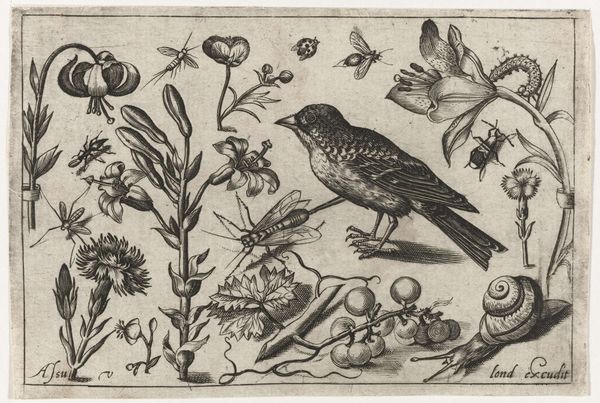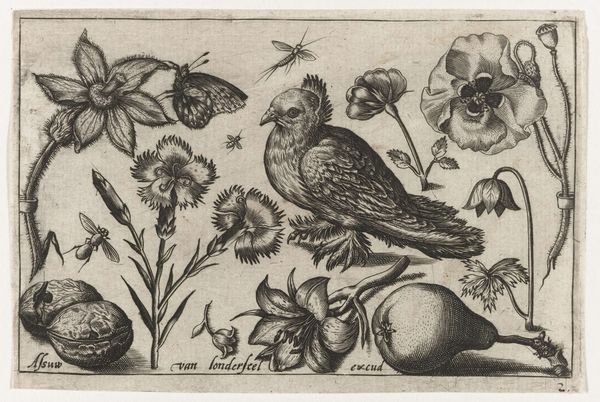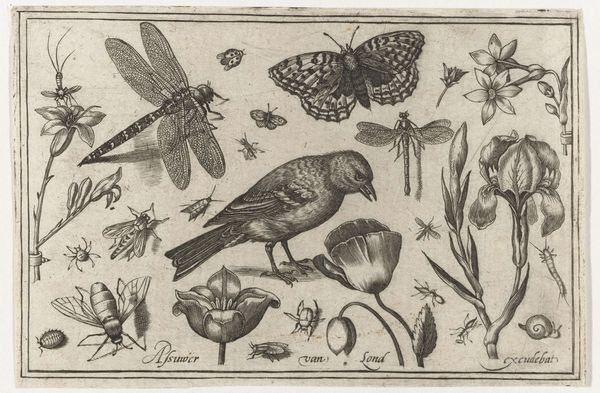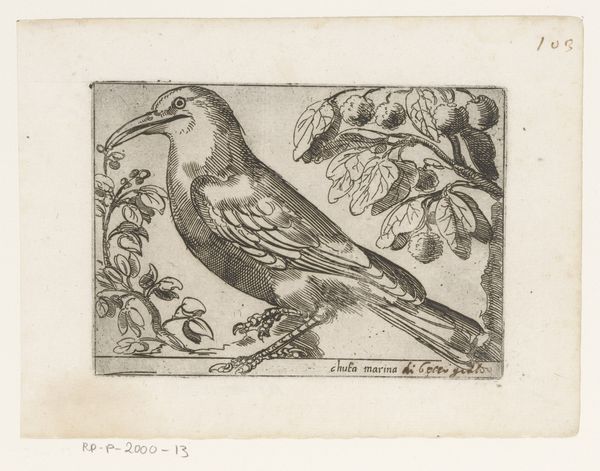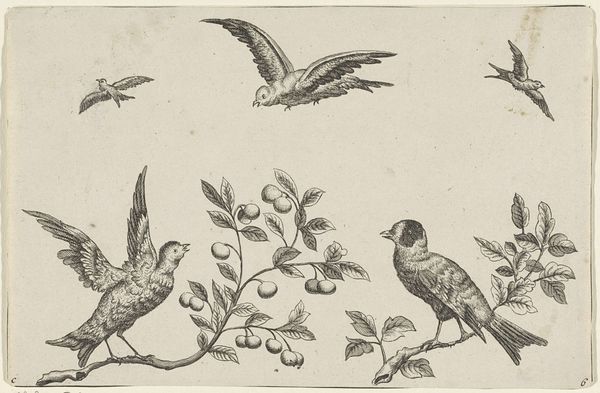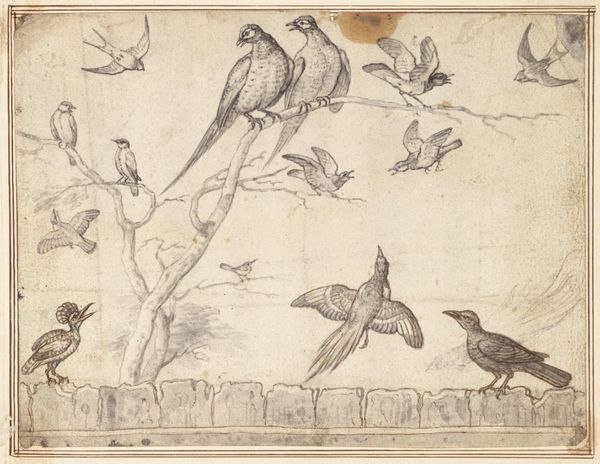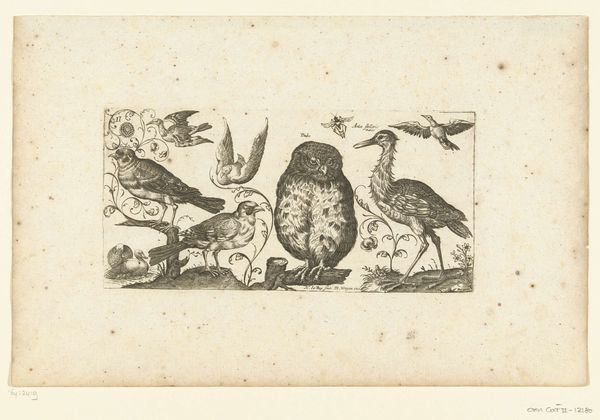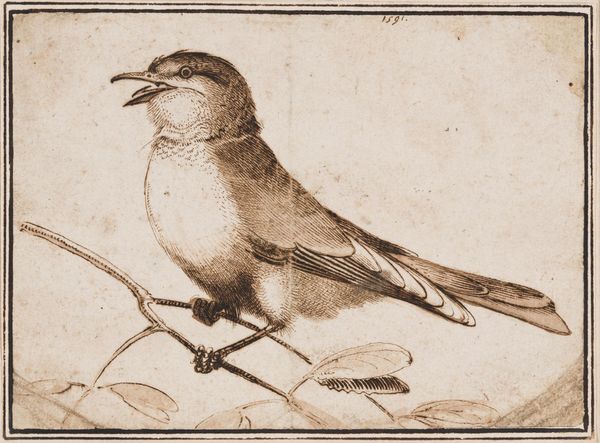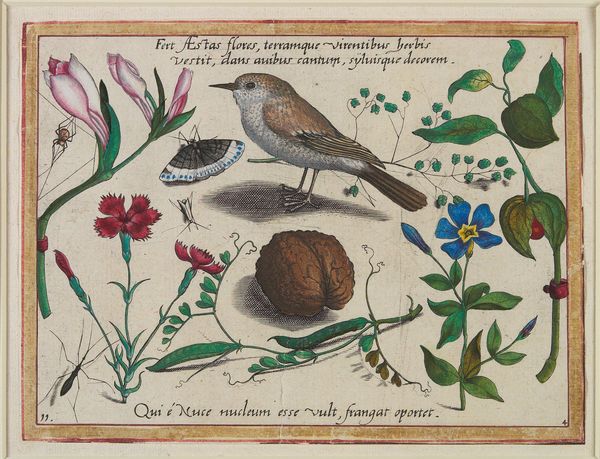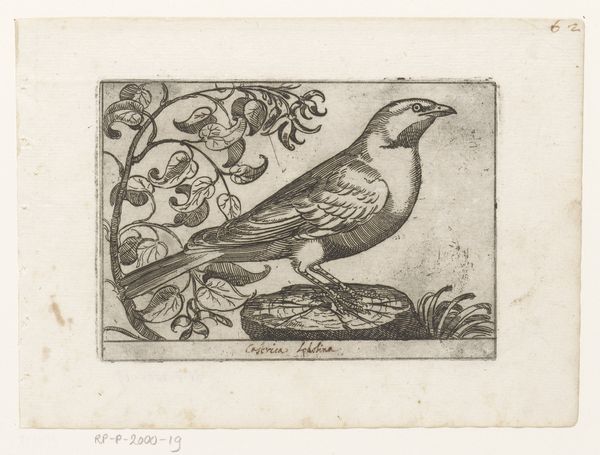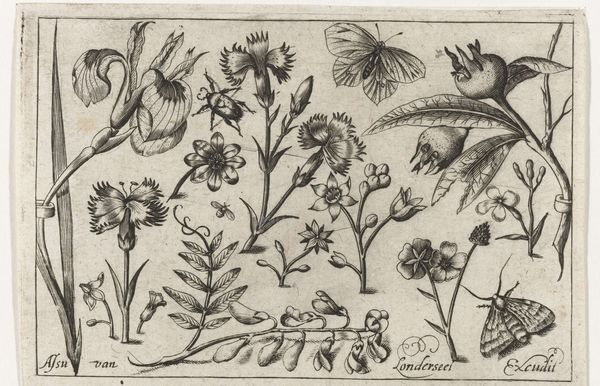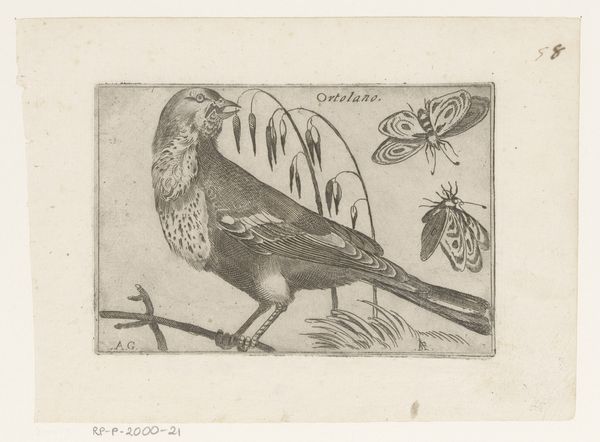
drawing, print, paper, ink, engraving, pendant
#
drawing
#
pen drawing
#
dutch-golden-age
# print
#
pen illustration
#
pen sketch
#
old engraving style
#
bird
#
flower
#
paper
#
personal sketchbook
#
ink
#
pen-ink sketch
#
13_16th-century
#
pen work
#
sketchbook drawing
#
northern-renaissance
#
sketchbook art
#
engraving
#
pencil art
#
realism
#
pendant
Dimensions: height 92 mm, width 140 mm
Copyright: Rijks Museum: Open Domain
Nicolaes de Bruyn made this etching, "Flowers, Butterfly and a Bird", using metal, acid, and ink. The intricate details of the flora and fauna depend on a skilled hand controlling the etching process. Lines are incised into a metal plate, which is then submerged in acid. The longer the plate sits in the acid, the deeper and darker the lines will be. The final print on paper captures these tonal variations. Printmaking, including etching, played a crucial role in early modern Europe. These images allowed for the relatively inexpensive circulation of visual information. While painting and sculpture were the province of the elite, prints reached a much broader audience. The intense labor required to make these detailed images stands in stark contrast to the later possibilities of mechanical reproduction, yet already we can see the impact of reproductive technologies on art. Consider how de Bruyn’s craft, dependent on skilled labor and material processes, made art more accessible to society. This piece prompts us to question traditional distinctions between art, craft, and industry.
Comments
No comments
Be the first to comment and join the conversation on the ultimate creative platform.
